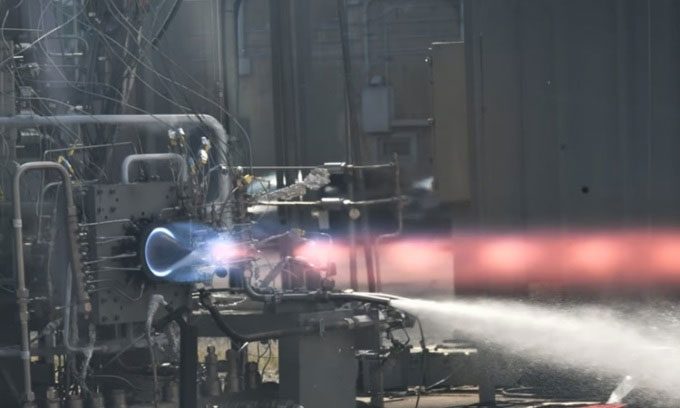A group of Chinese engineers has developed an advanced engine that operates in two modes, allowing aircraft to travel at 19,756 km/h at an altitude of 30 km.
According to a report from Interesting Engineering on December 27, Chinese researchers have created the world’s most powerful rotating detonation engine. Described as a revolutionary design, the new rotating detonation engine can elevate aircraft to an altitude of 30 km and move at Mach 16 (19,756 km/h). At this speed, intercontinental flights would take just a few hours while consuming significantly less fuel compared to conventional jet engines.

A NASA rotating detonation engine in operation during testing. (Photo: NASA).
Designed by Zhang Yining and colleagues at the Beijing Institute of Machinery, information about the engine was shared in an article published in December in China’s Propulsion Technology journal. The engine operates in two modes: the first mode, with speeds below Mach 7 (8,643 km/h), functions as a continuous rotating detonation engine (RDE). Air from the outside mixes with fuel and ignites, creating shock waves. These shock waves propagate within an annular chamber. During rotation, the shock waves combust more fuel, resulting in strong and continuous thrust for the aircraft.
In the second mode, when the aircraft moves at speeds above Mach 7, the shock waves stop rotating and focus on the circular base at the back of the engine. This helps maintain thrust through indirect detonation in a nearly straight line. According to the research team, the fuel auto-ignites as it approaches the rear base due to the high speed of incoming air. The engine relies on detonation as the primary thrust mechanism throughout its operation.
Zhang and his team did not disclose the engine’s efficiency in their research paper. However, based on previous scientific estimates, combustible gas explosions can convert nearly 80% of chemical energy into kinetic energy. This marks a significant improvement over conventional turbine jet engines, which typically achieve efficiencies of 20 – 30%, relying on slow and gentle combustion. Zhang’s research team stated that their design integrates rotating detonation and direct detonation across various speeds. This solution has multiple advantages, potentially enhancing the thermodynamic cycle efficiency across almost all speed ranges.
According to scientists, transitioning to the new detonation engine is challenging due to its dual operational modes. As speeds approach Mach 7, the rotating detonation mode becomes less stable. Therefore, the indirect detonation mode needs to be triggered quickly. One solution is to reduce the incoming air speed from Mach 7 to Mach 4 (4,939 km/h) or even lower. This would allow the fuel to heat sufficiently to auto-ignite. Another solution is to make slight adjustments to the engine’s internal structure, such as changing the diameter of the circular base and the angle of the shock waves. Such modifications could impact the overall performance of the engine. According to the research team, the new engine does not require specialized operating conditions and can operate efficiently in most scenarios.


















































